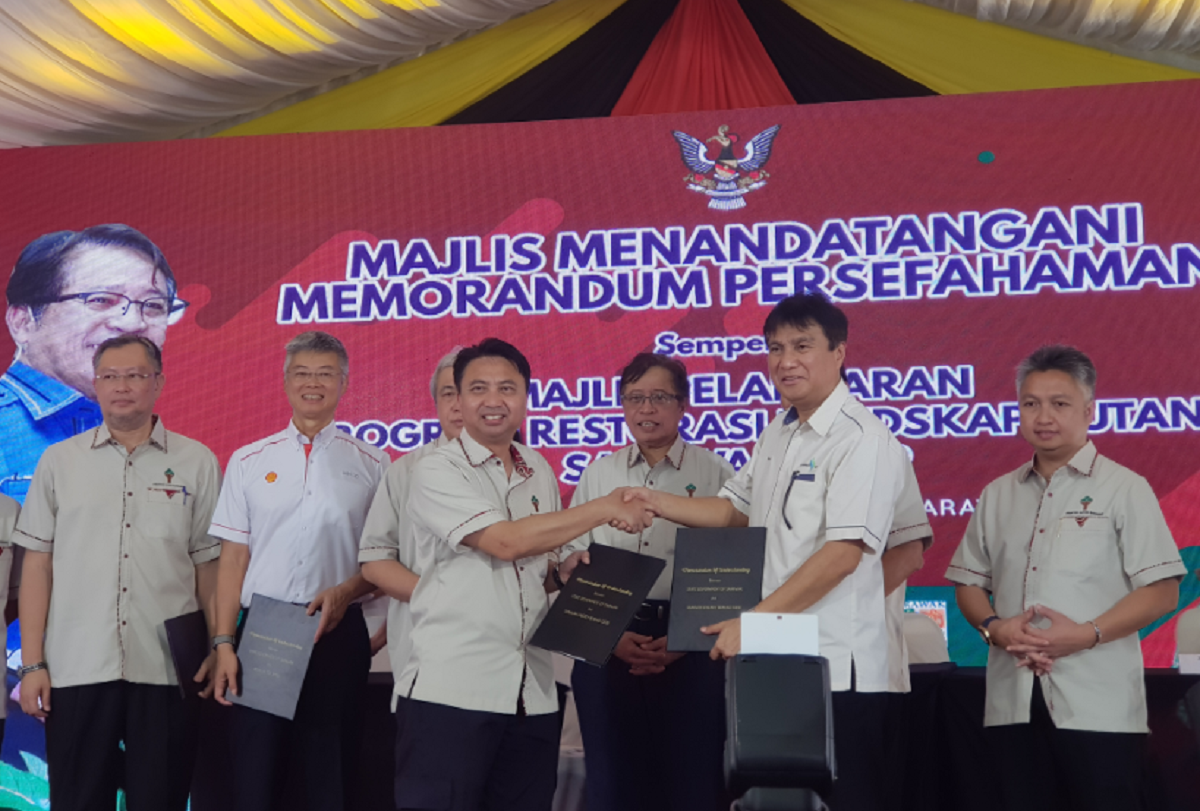

NEWS & UPDATES
Sarawak Energy Collaborates with Forest Department on Baleh Watershed Wildlife Connectivity Project
KUCHING, 27 JUNE 2019, THURSDAY: Sarawak Energy has signed a Memorandum of Understanding (MoU) with Sarawak's Forest Department to collaborate on the Baleh Watershed Wildlife Connectivity Project for research and data gathering in the effort to conserve and protect our catchment area and its ecosystem.
This three-year project is part of Sarawak Energy’s integrated catchment management initiative to support biodiversity conservation as well as build resilient hydropower resources through protection of catchment areas and water resources.
Group Chief Executive Officer Datu Sharbini Suhaili signed on behalf of Sarawak Energy while Forest Department was represented by its Director Hamden Haji Mohammad. The signing was witnessed by Chief Minister Datuk Patinggi Abang Haji Abdul Rahman Zohari Tun Abang Haji Openg.
The ceremony was held in conjunction with the launch of the Sarawak Forest Landscape Restoration Programme at Sabal Agroforestry Centre.
“The conservation and protection of biodiversity in the Baleh catchment area is vital to ensure the sustainability of a catchment area ecosystem,” Sharbini said, adding that it is also part of the long-term risk management to ensure the upstream water resources are protected for the sustainable operation of our future Baleh HEP.
The Baleh Watershed Connectivity Project is a continuation of the Heart of Borneo (HoB) scientific expedition in 2015, following which 66,721 ha of the surveyed area was officially gazetted as Baleh National Park within the Baleh HEP Catchment Area.
The Baleh watershed has also been identified as a wildlife connectivity area, linking the Hose Mountains in Sarawak to the Betung Kerihun National Park in Kalimantan, Indonesia.
In addition, this effort is aligned with the international best practices of Hydropower Sustainability Assessment Protocol (HSAP) and the Sustainable Development Goals, particularly SDG #15 that entails conserving biodiversity through prevention of endangered species extinction, as well as SDG #17 which calls for multi-stakeholder partnerships that mobilise shared-knowledge, expertise, technology and financial resources.
The collaboration effort also assisted the development of a long-term monitoring plan for wildlife conservation within the proposed Baleh HEP reservoir as part of the preparation for Wildlife Monitoring and Rescue (WiMOR) of Baleh HEP.


Abang Zohari witnessing the exchange of documents between Sharbini (second right) and Hamden.